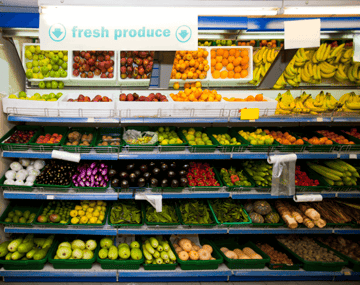Food recalls are on the rise, and while some argue that the higher numbers may be due to improved reporting, it remains undisputed that the increased number of major outbreaks is alarming. Bacterial contamination is the leading cause of recalls, accounting for 44.1 percent of all cases, according to Stericycle. Among pathogenic bacteria, Listeria is one of the deadliest and most problematic organisms encountered in the industry. Listeria causes 28 percent of food-related deaths, second only to Salmonella, which causes 31 percent of deaths.
Of the 386 recalls, market withdrawals and alerts reported by the FDA in 2018 (non-fiscal year), almost 13 percent were linked directly to Listeria contamination, including two multistate outbreaks involving deli hams and pork products. Preventing Listeria contamination is crucial, especially for manufacturers of frozen and ready-to-eat foods.
Why is Listeria so dangerous?
Listeria is a bacterium that is present everywhere. It can withstand refrigeration temperatures, survives a wide pH range and can thrive even if there’s a lack of oxygen. Eating food contaminated with Listeria monocytogenes causes listeriosis, a serious infection that could be lethal, particularly for pregnant women and their newborns, the elderly, and people with weakened immune systems. According to the Centers for Disease Control (CDC), an estimated 1,600 people get listeriosis each year, and about 260 people die.
Preventing Listeria contamination
Proper heat treatment and sanitation are the main ways to keep Listeria monocytogenes out of food. Heat treatments, such as pasteurization, easily destroy the bacteria. The problem, however, is ensuring that food does not become contaminated after production. An article in Food Safety Magazine, ‘Listeria Guidance and Best Practices in Produce Facilities’ provides the following recommendations for environmental control of Listeria:
-
Understand your level of vulnerability by testing your current production environment.
-
Eliminate equipment and facility risks. For instance, where possible, adopt epoxy-coated, seamless walls and floors for easier cleaning
-
Improve traffic flow for better control; for instance, by designating different traffic routes for employees who work in RTE and non-RTE areas
-
Validate your cleaning and sanitation programs
-
Design a suitable environmental program
- Build an effective food safety culture.
Adopting industry standard programs for Listeria control could also be immensely useful. A good choice is the Listeria Control Program (LCP) developed by the American Frozen Foods Institute (AFFI). The program takes a holistic approach to Listeria control and provides detailed resources, guidelines, and standardized procedures in the following seven areas:
-
hygienic design
-
sanitation controls
-
environmental monitoring
-
process validation
-
hygienic zoning
-
freezer management
-
good manufacturing practices
The FDA also provides draft guidance for the control of Listeria in ready-to-eat foods. The document includes recommendations on several aspects of Listeria control including controls for personnel, plant design, construction and operation, and environmental monitoring to verify control of Listeria spp.
Protecting your supply chain
While maintaining good sanitary practices within your own firm is important, you also need to keep an eye on your suppliers. We have seen many companies recall their products due to food safety breaches in their supply chain. Supply chain visibility is crucial for ensuring your suppliers abide by industry standards for Listeria control. To learn more about how FoodLogiQ can help you ensure food safety, traceability and supply chain transparency, request a demo.
Other posts you might be interested in
View All Posts
Food Safety
7 min read
| May 25, 2017
Food Lot Traceability Systems Best Practices: Where Does Your Food Come From?
Read More
Recall
3 min read
| August 6, 2019
Consumer Reports Finds Listeria Following Leafy Green Tests; FDA to Review the Publication’s Data
Read More
Food Safety
8 min read
| March 2, 2016

